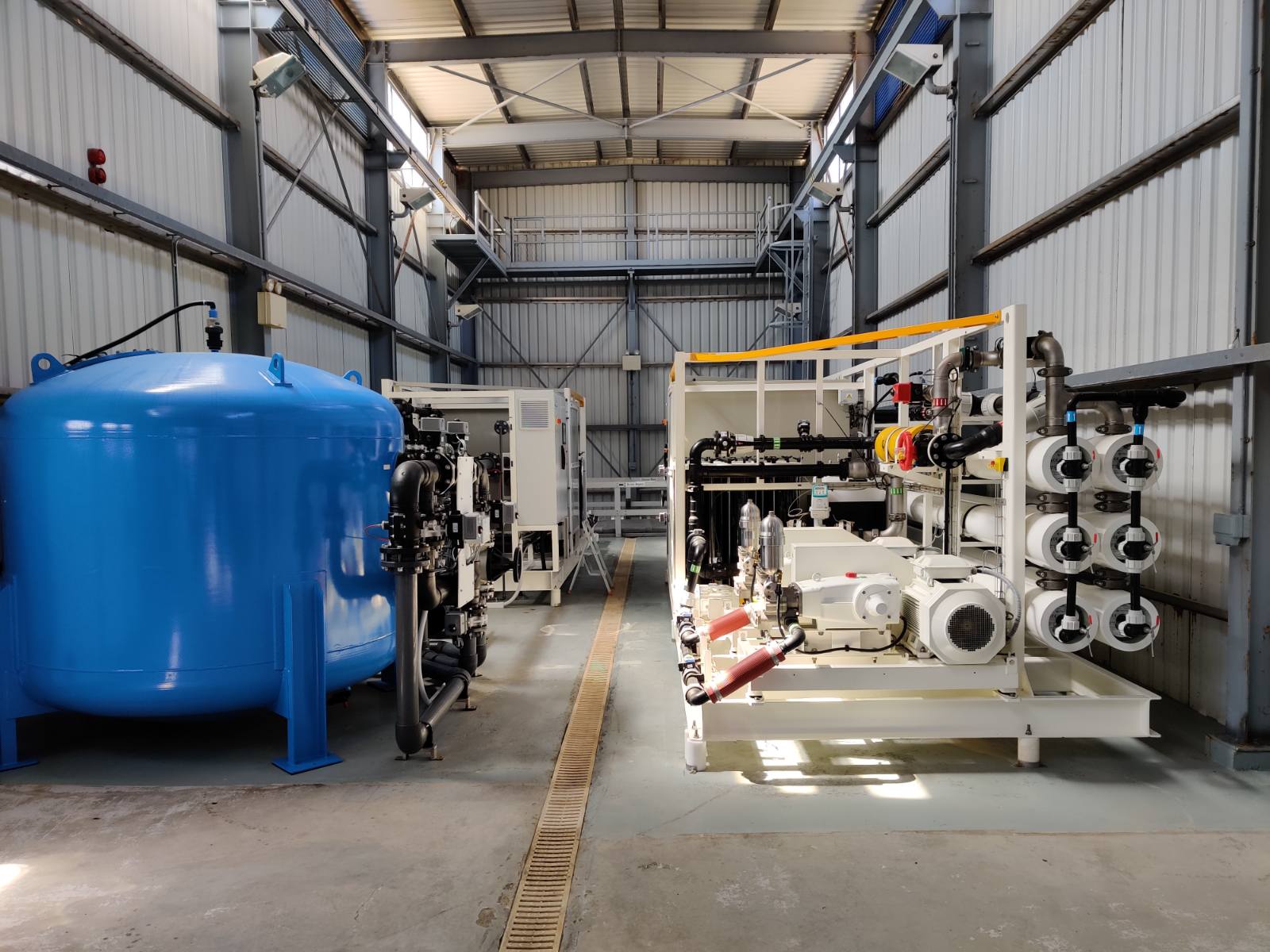What is the function of seawater desalinatio plant?
Sea water desalinatio plants play an important role in solving the problem of scarcity of fresh water resources. These plants use reverse osmosis technology to convert seawater into usable freshwater resources to meet the growing demand for water.
First of all, one of the main functions of the seawater desalinatio plant is to solve the problem of lack of fresh water resources. Many regions face the challenge of scarce freshwater resources, especially in arid areas or island countries. In these places, seawater desalinatio plants can become an important supplementary water source, helping to alleviate freshwater supply tensions and provide reliable drinking and industrial water.
Secondly, sea water desalinatio plants can improve water resource utilization efficiency. Sea water occupies the vast majority of the earth's surface, but most of it is salt water and cannot be directly used as a source of water for human life and production. Through seawater desalinatio technology, seawater can be converted into usable freshwater resources, thereby making full use of marine resources and improving water resource utilization efficiency.
In addition, the sea water desalinatio plant can also enhance the ability to respond to water resources. With population growth and the impact of climate change, the demand for water resources continues to increase, and traditional freshwater resource supply methods can no longer meet the demand. The construction of the seawater desalinatio plant can provide a stable source of supplementary water and enhance the stability and sustainability of water supply for society.
Finally, the construction of seawater desalinatio plants can also promote economic development and social progress. The application of seawater desalinatio technology can not only provide water resources, but also create employment opportunities, promote technological innovation and industrial development, and promote economic growth and social progress.
In summary, the seawater desalinatio plant plays an important role by converting seawater into usable freshwater resources, solving the shortage of freshwater resources, improving water resource utilization efficiency, enhancing the ability to respond to water resources, and promoting economic development and social progress.

How much does a seawater desalinatio plant cost to build and operate?
The construction and operating costs of sea water desalinatio plants are important factors affecting their development and application. The following are the main considerations and components of seawater desalinatio plant costs:
First of all, construction cost is one of the important factors affecting the cost of sea water desalinatio plant. The construction of the seawater desalinatio plant requires a large investment in purchasing equipment, building plants and infrastructure, etc. Among them, the procurement costs of core equipment such as reverse osmosis membranes and high-pressure pumps are relatively high, accounting for the main part of the construction costs. In addition, expenses such as land costs, engineering design fees, construction personnel wages, etc. also need to be considered.
Secondly, operating costs are another important component of seawater desalinatio plant costs. The operation of seawater desalinatio plants requires a large amount of energy, especially electricity and fuel. Among them, the operation of high-pressure pumps requires a large amount of electricity, and the cleaning and maintenance of reverse osmosis membranes also require a certain amount of energy and manpower. In addition, operating costs such as maintenance costs for plant and equipment, replacement costs for chemicals and filters also need to be considered.
In addition, the operating efficiency and management level of the sea water desalinatio plant will also affect its cost. The more efficient the operation, the less energy and chemicals are consumed and the costs are lower. The improvement of management level can reduce labor costs and operation and management expenses, further reducing the overall cost of the seawater desalinatio plant.
To sum up, the construction and operation costs of the seawater desalinatio plant include construction investment, equipment procurement, energy consumption, maintenance, labor costs and other aspects. Various factors need to be comprehensively considered to ensure the long-term stable operation of the seawater desalinatio plant. Economic feasibility.

What are the economic and environmental impacts of sea water desalinatio?
Sea water desalinatio has many economic and environmental impacts. First, from an economic perspective, seawater desalinatio provides a reliable source of water for areas with scarce freshwater resources. This helps sustain agriculture and industry while promoting population growth and urbanization. The construction and operation of the seawater desalinatio plant also created a large number of job opportunities and promoted the prosperity of the local economy.
However, sea water desalinatio also faces some challenges and potential environmental impacts. First, the seawater desalinatio process requires a large amount of energy, which may lead to increased carbon emissions and thus adversely affect the environment. Therefore, finding more sustainable energy sources, such as solar or wind energy, to power sea water desalinatio plants is the direction of future development.
Second, the seawater desalinatio process produces wastewater that contains high concentrations of salt and other impurities. If not treated properly, this wastewater can cause harm to marine ecosystems. Therefore, how to properly handle and discharge wastewater to avoid negative impacts on the environment is one of the problems that needs to be solved in the operation of sea water desalinatio plants.




